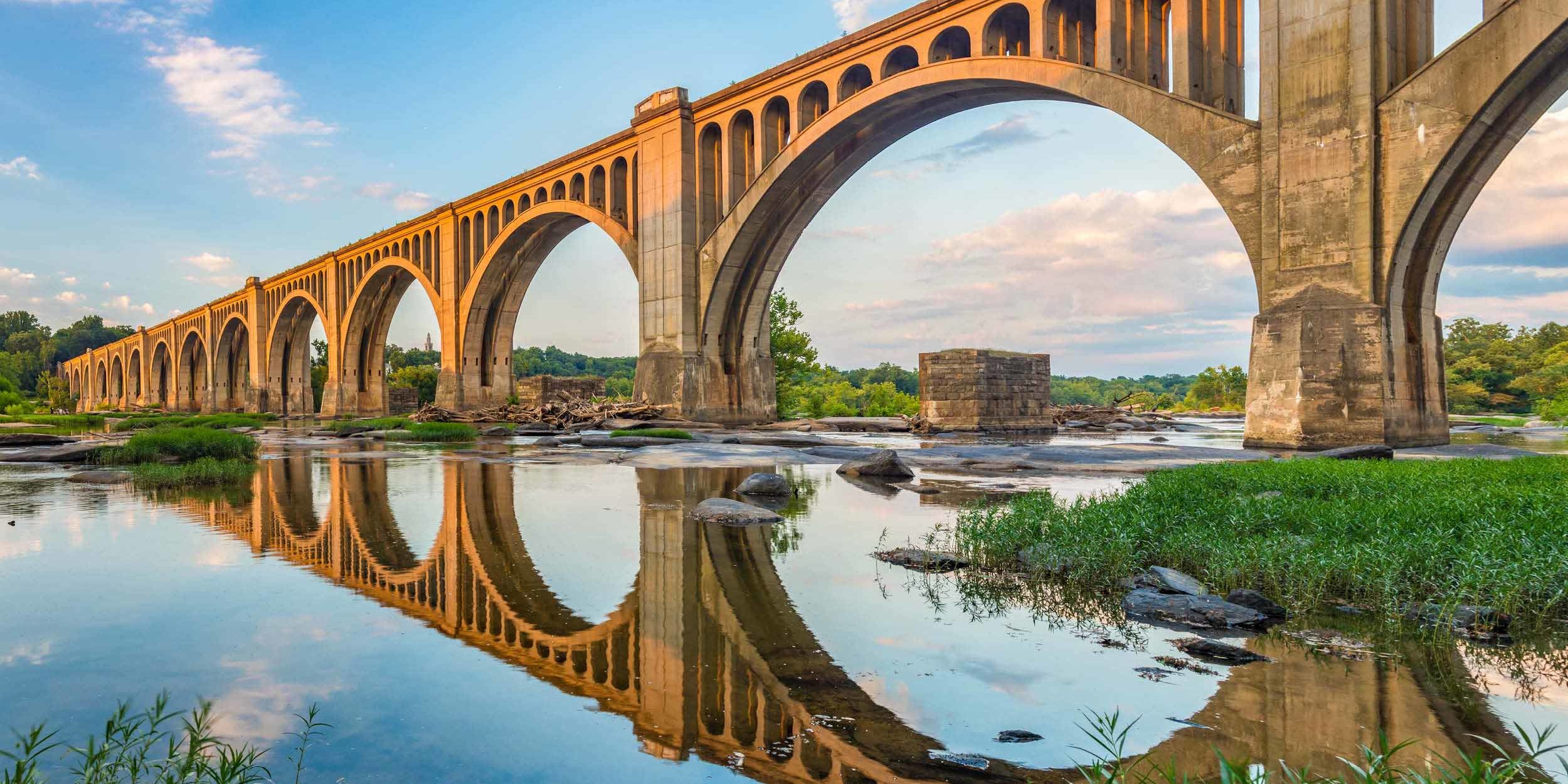The Florida Department of Transportation was able to preserve the historically significant architectural features of the Bridge of Lions, the gateway to historic St. Augustine. Accomplished by constructing a “bridge within a bridge,” the improvement project was able to retain key elements of the original bridge while addressing the bridge’s structural problems.
The Bridge of Lions crosses Matanzas Bay (part of the Intracoastal Waterway) and connects the city of St. Augustine with the resort communities of Anastasia Island, St. Johns County, Florida. It is located in an urban setting, with its western approach in the historic district of St. Augustine. Designed by John E. Greiner and constructed in 1927, the bridge has a total length of 1,545 feet. The main span is a 95 foot double-leaf rolling lift bascule. Approach spans are steel arched girder-floor beam spans with cantilevered overhanging sections.
This architectonic bridge is a significant feature of the historic streetscape of St. Augustine and is a gateway to the old city. The bridge was rehabilitated in order to retain its historically significant architectural features, while solving the bridge’s structural problems. This was accomplished by constructing a “bridge within a bridge.” Enough of the old bridge was retained to classify the project as a rehabilitation and not new construction. New construction would have required use of all modern design criteria.
Prior to rehabilitation, the bridge was in fair to poor condition, particularly in terms of the fracture critical girder-floor beam approach spans and the substructure units. At many locations, crutch bents had been previously installed in order to provide additional support.
Rehabilitation Process
As part of the rehabilitation, the bridge’s two fascia girders were retained for visual appearance, while new steel stringers were installed inside the girders. The fascia girders, which were removed, repaired, and then reset in place, were relieved of most of the loads and the new stringers now carry the majority of the dead load and the traffic loads. The stringers are hidden from view and will not distract from the architecturally significant arched girders. In addition, the approach spans were widened in order to improve the roadway geometry.
The bascule piers and associated towers were left in place and repaired. This included replacing the existing concrete piers within the splash zone with new concrete, as the existing concrete contained high levels of chlorides. The bascule piers were strengthened by the addition of drilled shafts, and a new footing was placed below the existing waterline footing in order to provide sufficient strength for a modern design scour event.
Several features original to the bridge, but previously removed or replaced, were replicated. These included the pedestrian railing (with the height increased to meet modern standards), light standards, and rotating traffic gates. The bridge steel was painted to match the original bridge color.
The original bridge was recognized as important for its high artistic merit, rather than its technological significance. This made it possible to focus the rehabilitation on its historic character and appearance. This resulted in Florida DOT making a finding of No Adverse Effect. The Florida State Historic Preservation Officer concurred with this finding.
Lessons Learned
By retaining a sufficient amount of the existing bridge, this project was considered a rehabilitation. New construction would have required use of all modern design criteria, such as widening the navigable channel from the existing 84 foot to the 125 foot width now required for the Intracoastal Waterway.
To maintain the bridge’s historic character, it was extremely important to retain the design of the piers and the arch-shaped fascia beams, in addition to the cantilevered end sections of the girder-floor beam approach spans. The fascia girders were reused on the slightly wider stringer approach spans, supported on substructure units that were rebuilt in-kind to the new geometry. The reused fascia girders support themselves and part of the bridge’s sidewalks.
For more information on the project, contact Roy A. Jackson, State Cultural Resources Coordinator, Florida Department of Transportation, e-mail: [email protected].
Additional case studies of best practices for historic bridge rehabilitation from across the country are detailed in a report produced by the Center for Environmental Excellence by AASHTO’s Historic Bridges Community of Practice. Link to Case Studies on Rehabilitation of Historic Bridges

